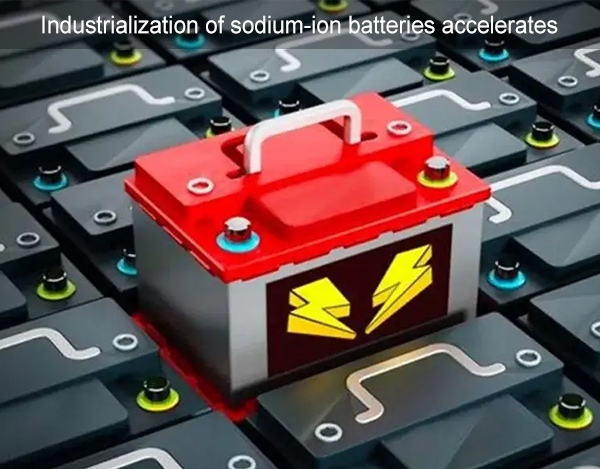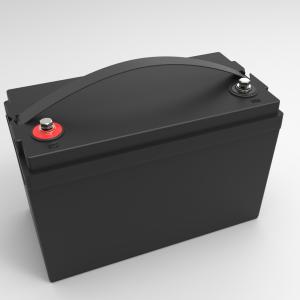Industrialization of sodium ion battery accelerates
1. The principle of sodium ion battery
The principle of sodium ion battery is similar to that of lithium battery, and the industrialization foundation is good. The principle structure of sodium ion battery is similar to that of lithium ion battery, and the preparation process is different, but the keheng-battery.com/Production.html target='_blank'>Production equipment is compatible.
The positive electrode materials of sodium batteries include layered metal oxides, Prussian blue analogs, etc., each with their own strengths; the negative electrode materials are mainly soft carbon materials other than hard carbon and graphite, and technical breakthroughs need to be made; separators, etc. are similar to lithium batteries. .
In 2011, the world's first sodium ion battery manufacturer was established. In 2017, the first domestic sodium ion battery manufacturer Zhongke Haina was established. In 2021, the Ningde era released the first-generation sodium ion battery. At present, the energy density of sodium ion battery is up to 160Wh/kg, and the number of cycles can be up to 5000 times.

2. Raw material price of sodium ion battery
The price of raw materials for lithium batteries remained high, and the industrialization of sodium batteries accelerated. Sodium resources are widely available worldwide in the form of sodium chloride, that is, table salt, while lithium ore is becoming a scarce resource on a global scale, existing in the form of salt lakes and lithium mines. At present, the demand for lithium carbonate is rapidly rising due to new energy vehicles, but there is a certain time lag in the extraction of the supply side.
3. Application of sodium ion battery
The sodium ion battery has a wide range of applications, including energy storage, passenger cars, and two-wheelers.
Sodium ion battery has good energy density, better safety than lithium battery, and low cost, which is conducive to large-scale integrated use, and is very suitable for the application of energy storage industry. The installed capacity of sodium batteries is vast.
In addition, sodium batteries are expected to further penetrate due to acceptable energy density and low cost in both cost-effective A00-class vehicles and electric two-wheelers that originally used lead-acid batteries with large volumes and low battery life.
It is comprehensively estimated that by 2025, the domestic sodium ion battery market size is expected to reach 80-90 billion yuan.
4. Sodium ion battery has the same good industrialization foundation as lithium ion battery
The sodium ion battery is similar in structure to the lithium-ion battery; the sodium ion battery is a rocking-chair secondary battery similar to the lithium-ion battery. The sodium ion battery and the lithium ion battery belong to the Rocking Chair Battery, which mainly includes five parts: the positive electrode, the negative electrode, the electrolyte, the diaphragm, and the current collector. The technical difficulties are concentrated on the positive electrode and negative electrode materials. Its working principle is the intercalation and deintercalation of sodium ions in the cathode and anode materials to realize the charging and discharging of energy. When the battery is charged, sodium ions migrate from the positive electrode to the negative electrode through the separator, some of the sodium ions in the positive electrode are deintercalated into the electrolyte, and some of the sodium ions in the electrolyte are intercalated into the lattice gaps of graphite or hard carbon materials. On the contrary, during discharge, the sodium ions of the negative electrode are deintercalated, the sodium ions of the positive electrode are intercalated, and the sodium ions migrate from the negative electrode to the positive electrode.
5. The physical and chemical properties of sodium and lithium elements are different, and the battery performance has its own strengths.
5.1, the ionic radius of sodium ions is larger than that of lithium ions, which makes it more difficult to intercalate/deintercalate layered positive and negative electrode materials. In common layered metal oxide materials, sodium ions can only be inserted into octahedral gaps, while lithium ions can be inserted into tetrahedral and octahedral gaps at the same time, which makes sodium ion cathode materials lacking in energy density; It is difficult to embed between the anode graphite sheets, so that the sodium ion battery needs to use other anode materials.
5.2, the first ionization energy of sodium ion is lower, which makes sodium ion more stable, and it is not easy to precipitate dendrites at low temperature, which brings more excellent safety, stability and low temperature performance to sodium ion battery.
5.3, the molar conductivity of sodium ions is higher, so that the electrolyte concentration required by the sodium ion battery is lower, and the requirements for additives are lower, and the electrochemical performance of the sodium ion battery is slightly better than that of the lithium ion battery.
The sodium ion battery is similar to the lithium-ion battery technology, and the investment in research and production is small. On the one hand, sodium ion battery is similar in technology to lithium ion battery in many aspects, and the production lines can be converted to each other, and the additional cost is smaller. The layered oxide cathode material of sodium ion battery and the ternary lithium cathode material both adopt the sintering process, and the equipment can be used universally. On the other hand, lithium-ion batteries have been developed for many years, and the industry has accumulated profound technologies. Various materials provide innovative ideas for sodium ion battery materials, which can make their research and development costs lower than that of lithium-ion batteries at the same stage.
6. The price of lithium carbonate remains high, and the raw materials for sodium batteries are easy to obtain and the cost is low
The supply and demand relationship of sodium resources is stable, and the price fluctuation is small. Sodium is very high in the earth's crust, which is more than 1,000 times more abundant than lithium. With the vigorous development of the new energy industry, the price of battery-grade lithium carbonate continues to rise. WIND statistics show that since 2022, the average unit price of lithium carbonate has been higher than 400,000/ton, while the corresponding sodium ion battery raw material light soda ash has remained at 0.2-0.4 million yuan/ton, less than 1% of the former. Due to the surge in downstream lithium battery production capacity, the supply and demand relationship of lithium carbonate continues to be tense. In the future, due to the rising cost of low-grade lithium ore mining, lithium prices will continue to rise. Under the circumstance of tight supply of lithium carbonate, the output of lithium battery cathode materials and electrolyte will be extremely vulnerable to the impact of changes in upstream raw material prices. On the contrary, soda ash resources are extremely abundant and involve many industries, and the cost of mining will not increase in the foreseeable future. Therefore, the supply and demand relationship of sodium resources is more stable, and supply gaps are less likely to occur. The raw material supply of downstream manufacturers of sodium ion battery is Fully guaranteed.
 English
English Chinese
Chinese